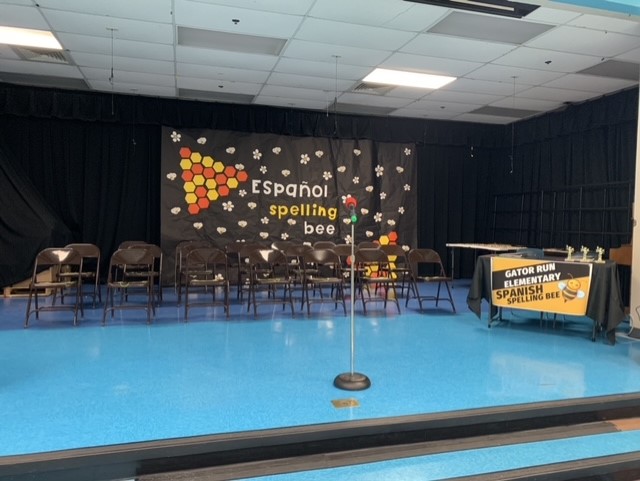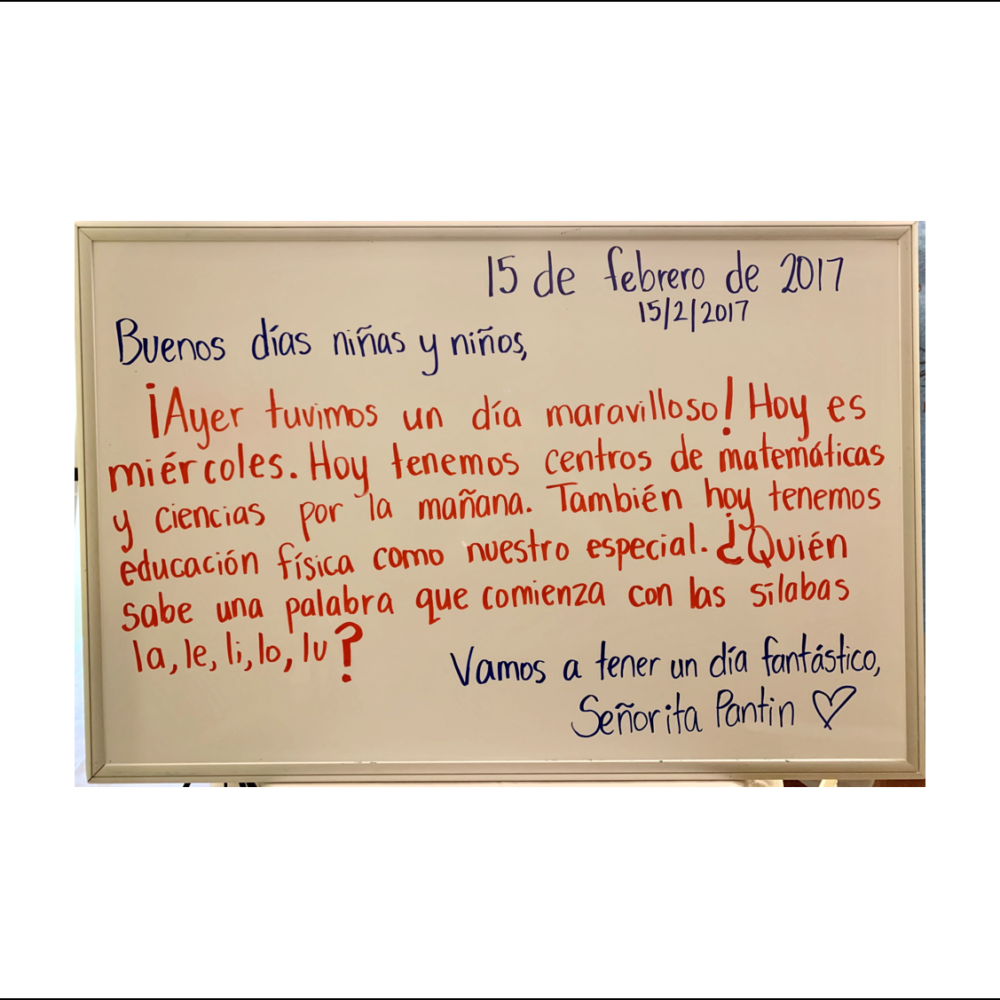This year our school decided to host our first ever Spanish Spelling Bee. Another school in our district reached out to us that they were hosting and asked if we were interested in hosting, so myself and our ESOL Specialist took on the task to organize a Spanish Spelling in 3 weeks in our school. Here is what we did in order to have an amazing Spanish Spelling Bee event at our school:
(1) First, we received the 10-word list plust 5 bonus words that we would utilize to initially test the students and then have our winners. Our spelling bee would include dual language student participants and ESOL student participants. For our 3rd-5th Dual Language classes (2 classes per grade level), we would choose 4 students, and for the ESOL students in general education classes, we would choose 3 students per grade, for a total of 21 participants.
(2) Our 3rd, 4th (myself) and 5th grade Spanish Dual Language teachers tested our students. Then, I helped our ESOL specialist go around to the general education 3rd, 4th and 5th grade classes to test the LY/LF ESOL Spanish-speaking students. I created a schedule and we split the classes we needed to test between the two of us and had all the ESOL students tested in one week. We tested the 3rd ESOL on one day, the 4th ESOL on the next and the 5th ESOL on the third day.
(3) After checking all the written spelling tests, we found the participants who qualified. We created a family permission slip and sent it home with those students, asking them to bring it back as soon as possible. The permission slip also invited the parents to come and attend the spelling bee!
(4) After receiving the permission slips back, we emailed each participants’ parents and emailed them the National Spanish Spelling Bee Student Study Guide (http://nationalspanishspellingbee.com/) that their child could use to review/study if they wished to.
Next, we had to focus on getting together how we would run the bee and what decorations and things we needed to make this event organized and exciting!
I found trophies from the K2Awards website (https://k2awards.com/) and personalized three “Standard Spelling Bee” trophies – I engraved Spanish Spelling Bee, our school name and Primer/Segundo/Tercer lugar.
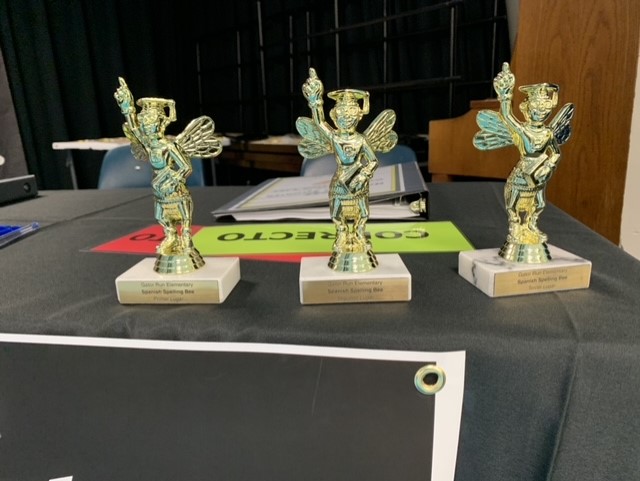
Then, I grabbed some black bulletin board paper to create a backdrop. I created some lettering on the computer and found some black/white/yellow flowers and printed them in different sizes and bought some bee cutouts from Amazon (https://a.co/d/boBTvdp). When I received the bee cutouts, I used a black sharpie to add letters to each bee wing. I used all of this to create the backdrop for our event.
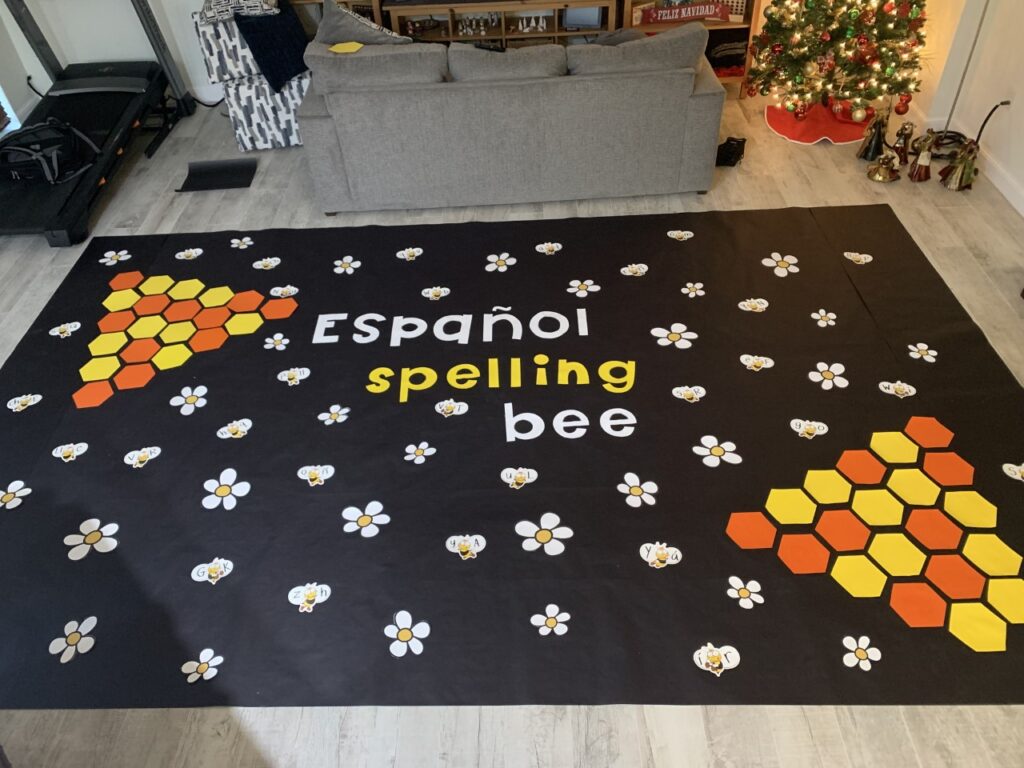
I also created number signs for numbers 1-21 for all our participants so they could wear the number sign during the bee. The day before the bee we set up the backdrop and the chairs and on each chair we placed the participant numbers (which we slipped into a transparent sleeve and added lanyard so it could be worn by each participant).
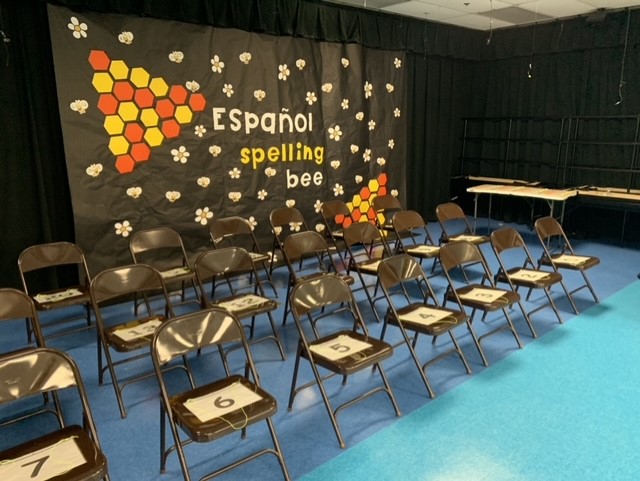
We created Judge’s Scoring Sheets and created binders for each judge (two judges) and one binder for the host (me). In the binder we also included a green “CORRECTO” sign and a red “INCORRECTO” sign for each judge that they would hold up after each participant spelled their word to indicate whether it was correct or incorrect.
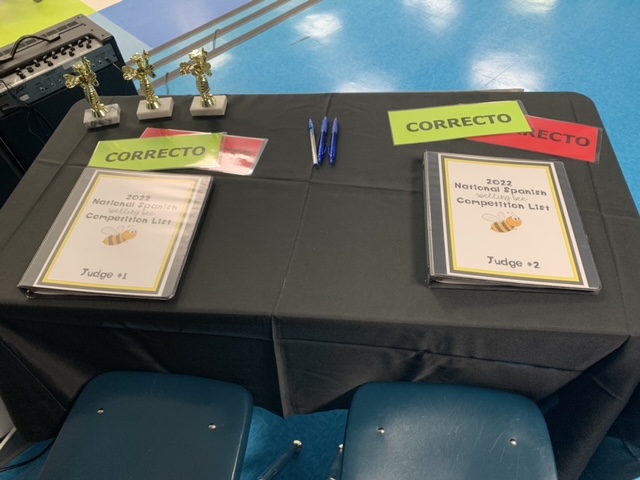
You can click here to download a copy of the Judge’s Scoring Sheet & participant #/name/grade/teacher name sheet we used to keep everything organized:
We put together the rules and regulations based on the rules and regulations from the National Spanish Spelling Bee, which you can download here:
We also decided that 3 days before the actual spelling bee we would gather all the participants in our cafeteria (where the bee would be held) and we would explain to them all the rules of the bee and show them examples so that they felt more comfortable and prepared the day of!
Finally, I created participation certificates in Spanish for each student, and we purchased bee keychains for the participants. All participants would receive the certificate and keychain, and the top Three Winners would also each receive their trophy.
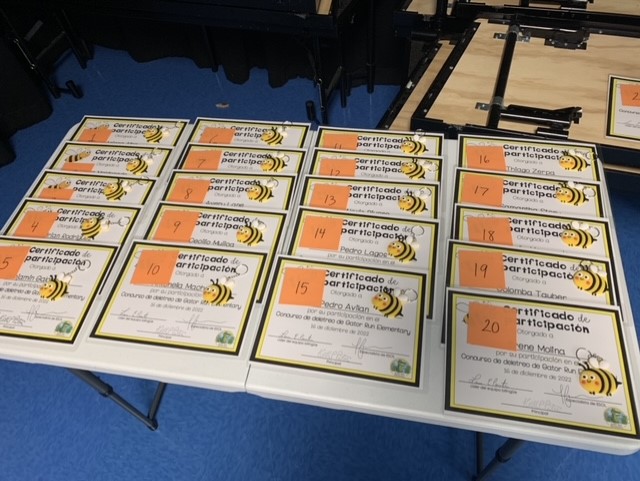
Bee keychains: https://a.co/d/19oOFKw
Bee ballons (which I went to Party City to have them blow them up for me the night before): https://a.co/d/8ecXobR & https://a.co/d/hpvMaxR
Finally, we had previously invited not only the parents of the participants to the bee, but also the 3rd-5th dual language classes and the classes of the participating ESOL students who had qualified. This ensured we had a great audience for the event and that all participants had someone supporting them!
In terms of the bee itself, after the participant said, spelled and said their word out loud and after the judges had held up the correcto or incorrecto signs, the participant had to go sit back down until the round was over. At the end of the round, the ESOL specialist grabbed the judges’ score sheet and brought it over to me. Any particicpant with an X for that round, I asked to stand up, they were given their certificate and keychain and escorted to sit down in the audience for the rest of the bee. We had the audience applaud them and the great job they had done!
We repeated this after each round until we had less and less students and continued until we had our top 3 and then our first ands second place winners!
I hope this post can help you get started to plan, organize and hold a Spanish Spelling Bee at your school! If you decide to host and there’s other schools in your zone/region that host as well, you could then do a zone/region competition between the top 2/3 winners from each school! Any specific questions about the word lists and all of that make sure to contact the National Spanish Spelling bee: nssbsa@gmail.com
